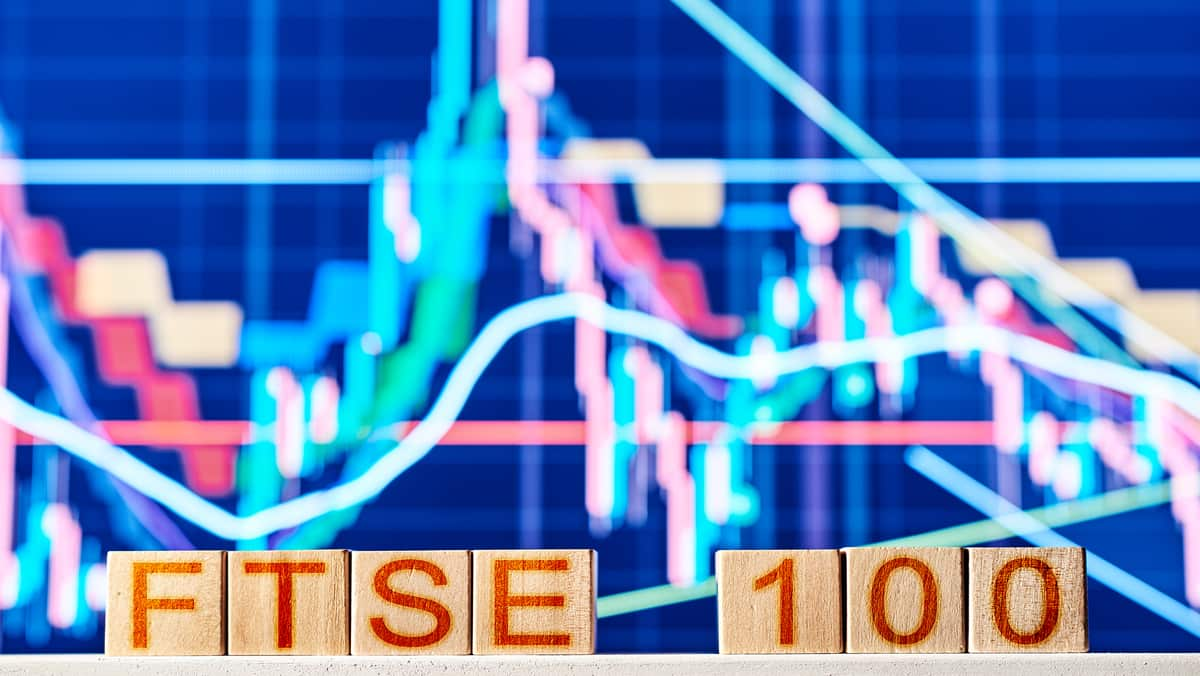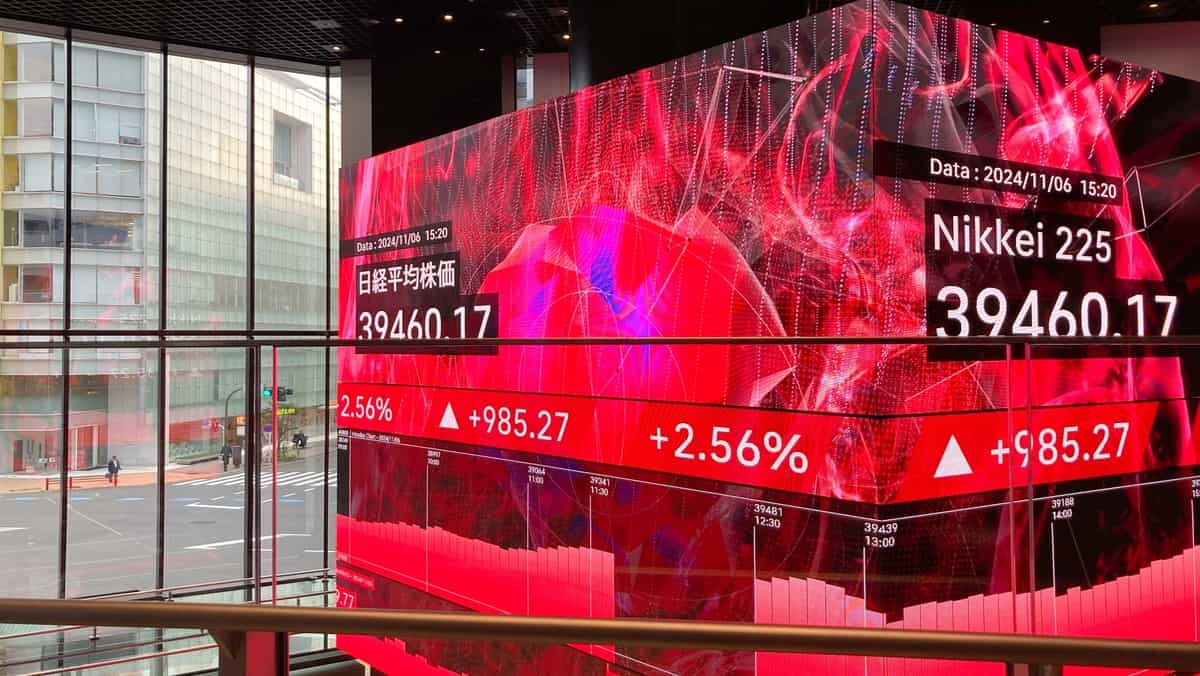Marks & Spencer, commonly known as M&S, is one of the largest and most beloved retail chains in the United Kingdom. With over 1,500 stores worldwide and around 80,000 employees, M&S has become a British company since its founding in 1884.
In this article, we’ll look in-depth at the M&S share price - how it has performed recently and what factors impact it. Learn more about the company shares and what it says about its financial health.

Image Retrieved from Business Matters’ webpage: bmmagazine.co.uk
Alt Image Text: A retail outlet of Marks and Spencer with shoppers passing by
Yes, Marks & Spencer Group Plc trades on the London Stock Exchange under the ticker MKS. It has been a publicly listed company since 1926.
Over its history as a publicly traded corporation, the company has paid dividends during good years and taken hits to its share price during more difficult periods. This includes global recessions, rising costs, changes in consumer behavior, and fierce retail competition.
Know how Initial Public Offering (IPO) works for businesses in this article: How Does an IPO Work? A Comprehensive Guide
Behind every public company are shareholders - individuals and institutions that own a portion of the business. Understanding top ownership stakes provides insight into who has the most significant influence and interests.
For Marks & Spencer, ownership breaks down into five key shareholder entities based on the latest filings:
The number one investor is Vanguard through its International Stock Index Fund, holding over 26 million M&S shares. Known for passively managed index investments, Vanguard offers broad diversified exposure rather than actively betting on specific stocks.
Close behind in second is Dimensional Fund Advisors (DFA) through one of its international small-cap funds at 21 million shares. DFA pursues a rules-based quantitative approach to investing globally across market caps.
Like Vanguard, ownership in M&S stems from diversification rather than a specific bullish view of the company. Profits come from long-term price gains, not active management.
The third spot goes to a Vanguard-indexed investment vehicle - their Developed Markets fund - holding around 15.5 million M&S shares. M&S gets a portfolio allocation from the index’s formulaic construction as a British stock.
As M&S grows over time, the Vanguard fund - and thus investors - reap the rewards proportionately. But no influence or guidance derives from the relationship.
This niche Exchange Traded Fund (ETF) from Avantis Investors represents our first active manager with over 11 million shares on the shareholder list. Their approach emphasizes smaller companies trading cheaper valuations in international markets like the UK.
So ownership in M&S comes from a specific strategy seeking overlooked value opportunities abroad. The influence remains limited but potentially more visionary in seeing turnaround potential.
Rounding out the top five holders is another broad passive vehicle from iShares - an S&P 500 company. Over 10 million M&S shares are included to track the overall benchmark return across Europe, Australasia, and the Far East.
Like Vanguard, no active direction gets provided by iShares to M&S leadership due to portfolio diversification. But profits from the British retailer flow back into higher portfolio values.
Learn to trade with this article: How to buy, sell and trade stocks
In December 2022, the M&S share price closed at 123.3 pence per share on the London Stock Exchange. This reflected a multi-year rebound from mid-2020 lows driven by improved company performance under its turnaround initiatives.
The positive momentum continued into early 2023 based on strong holiday sales numbers reported in January. M&S share price hit 145.8 pence, 15% in the first month—February uptick further to 160 pence per share - a historic high since mid-2018. Profits also beat expectations, sending the highest dividends in years.
After reaching new multi-year highs, some minor profit-taking occurred during March and April. M&S share price drifted back to the 164-167 pence range but remained robust. By May, first-quarter earnings beat lowered expectations, allowing the stock to rebound. M&S share price closed at 178.6 pence, signifying investor belief in sustained transformation.

June through August saw the fastest M&S share price acceleration of the year, hitting 20-month highs of 206 pence by late summer. This suggested strong underlying business momentum across divisions. After a blistering run exceeding 40% returns in 2023, a pullback materialized in September and October as shoppers tightened their belts.
M&S share price dropped closer to 200 pence territory by late fall. But by November, consumer resilience returned, and M&S notched new all-time high share prices, eclipsing 250 pence and reaching 265 pence by the close of December 2023.
Wondering what CFD is all about? Read this article: What is the main difference between CFD and share trading?
In the previous section, we saw how the M&S stock price embarked on a roller coaster ride over the past year - reaching new highs but facing periodic pullbacks. What factors drove this volatility?

M&S competes against retail giants like Tesco, Sainsbury’s, and Asda, along with discount chains Lidl and Aldi. Online pure plays like Asos, Boohoo, and Amazon Fashion also go head-to-head with M&S for apparel.
When rivals capture market share with lower pricing or innovation, M&S financials suffer - dragging down the share price. Investors may rotate into more attractive retail stocks.
Closing underperforming locations while expanding e-commerce channels results in restructuring charges that temporarily depress profits. However, it is necessary to align with digital shopping trends. Investors balanced short-term hits against the potential for much greater long-term gains as M&S catches up in online services and tech capabilities.
At the end of the day, better-than-expected profit growth, sales increases, margin expansion, and market share gains provide underlying support for the stock price. Deteriorating financial metrics conversely pressure valuations.
Strong holiday sales led by food and online channels powered M&S share price appreciation for much of 2023. But higher costs then dampened sentiment into year-end.
Here’s an interesting read for you: 7 risk management strategies for CFD shares
The Marks & Spencer share price reached new multi-year highs before pulling back on macroeconomic concerns. Strong financial performance, online shift success, and market share gains powered much of the stock’s value. However, increased costs and consumer belt-tightening periodically hampered momentum.
While M&S seems poised for a transformational turnaround, retail faces no shortage of risks. Investors should carefully analyze financial statements, competitive dynamics across divisions, store optimization plans, and economic trends before making investment decisions. Day traders should likewise focus on technical analysis to time entries and exits judiciously.
No stock offers guarantees, underscoring the need for diligence. Before putting your capital on the line, thoroughly understand M&S’s risks and opportunities on the road ahead.
Become a member of markets.com and access a cutting-edge trading platform!
“When considering “CFDs” for trading and price predictions, remember that trading CFDs involves a significant risk and could result in capital loss. Past performance is not indicative of any future results. This information is provided for informative purposes only and should not be considered investment advice.”
Risk Warning: this article represents only the author’s views and is for reference only. It does not constitute investment advice or financial guidance, nor does it represent the stance of the Markets.com platform.When considering shares, indices, forex (foreign exchange) and commodities for trading and price predictions, remember that trading CFDs involves a significant degree of risk and could result in capital loss.Past performance is not indicative of any future results. This information is provided for informative purposes only and should not be construed to be investment advice. Trading cryptocurrency CFDs and spread bets is restricted for all UK retail clients.

World Index Today: In today's trading session, global stock indices have shown varied performances, reflecting a mix of investor sentiment and economic indicators.

Stock Market News: The global stock market landscape is constantly evolving, influenced by economic indicators, geopolitical events, and corporate developments.

Amazon (AMZN) Shares Jumped 4% Today: Amazon.com, Inc. is one of the largest e-commerce and cloud computing companies in the world.
set cookie